Fujifilm SQ20: The future of Instant Cameras?
The Fujifilm Instax SQ20 was announced in Cologne, Germany, at Photokina in 2018. Taking on a different format from its current Instax line-up, the SQ20 comes fitted with a screen, digital sensor and a micro SD card slot. Rest assured it is still an Instax camera, taking hold of the classic instant square film. We’ve had our hands on this very interesting and intriguing camera for a few months, getting familiar with it and seeing who might use it.
SQ20 Key Features
- 2mp CMOS sensor
- F2.4 Aperture
- Fixed 35mm equivlent, focal length
- 4x Digital Zoom
- Built-in battery
- 16 photo effects
Taking the best of both worlds, Fujifilm has merged digital camera tech with one of its fab Instax cameras to create this Frankenstein machine. The main idea is to give the user more control in how their photos are produced. As we know from using instant cameras, control on how the picture is extremely limited and at times, frustrating if you’re new to the instant camera game. You’ve got 10 shots to get it right or you’re getting another pack of film out. With the SQ20 you can take several photos, play with the exposure compensation, zoom in or add a filter – then hit print!
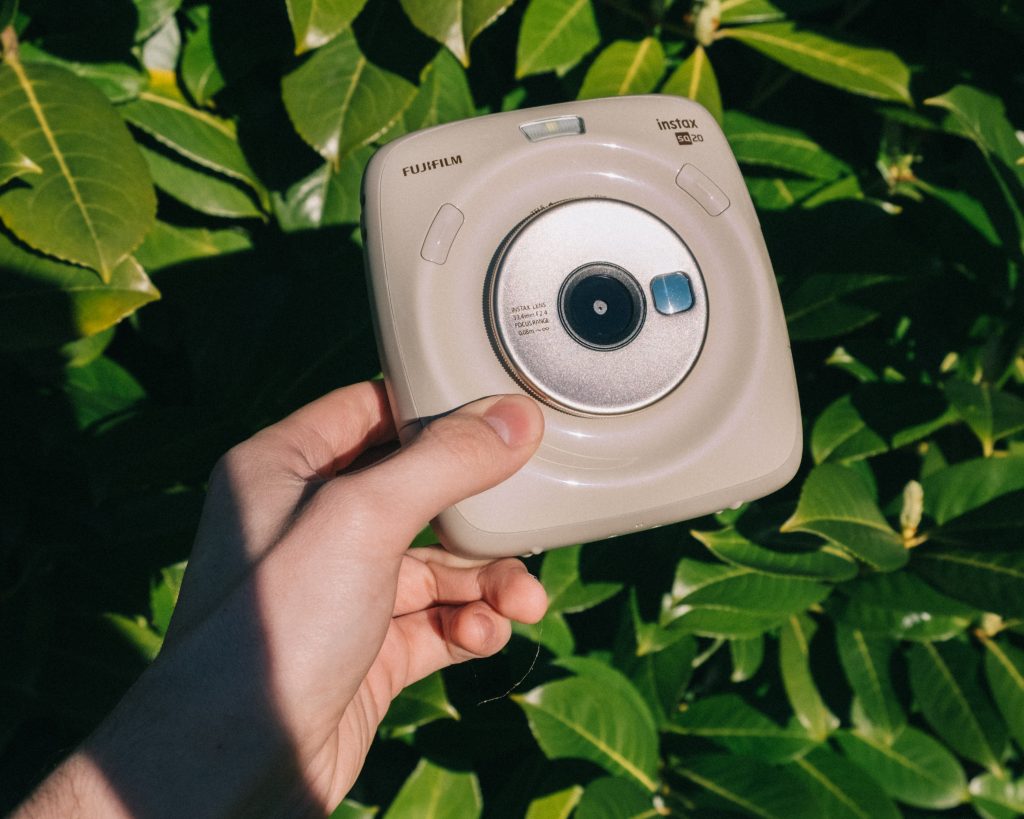
Fujifilm has taken a very interesting approach and has created something that has been uttered in the camera community “imagine if they put a screen on it?” and they have.
Working off a digital photo the Instax SQ20 uses the same tech as its Instax printers. Using a light strip that exposes the film as it prints giving you the final image. This piece is at the heart of the camera and what enables it to go from a digital to a physical photo. Using a 2-megapixel sensor does a few things for the SQ20, one of them is keeping costs down and the other to keep the files smaller. You won’t be printing on anything else other than Instax square films so there’s no need for it to have a higher resolution. Even when we’ve done prints we don’t see resolution creeping in to remind you it was taken on a digital sensor. However, it may become obvious when you use its digital zoom so our advice would be to shoot it wide to avoid the low-resolution problems.
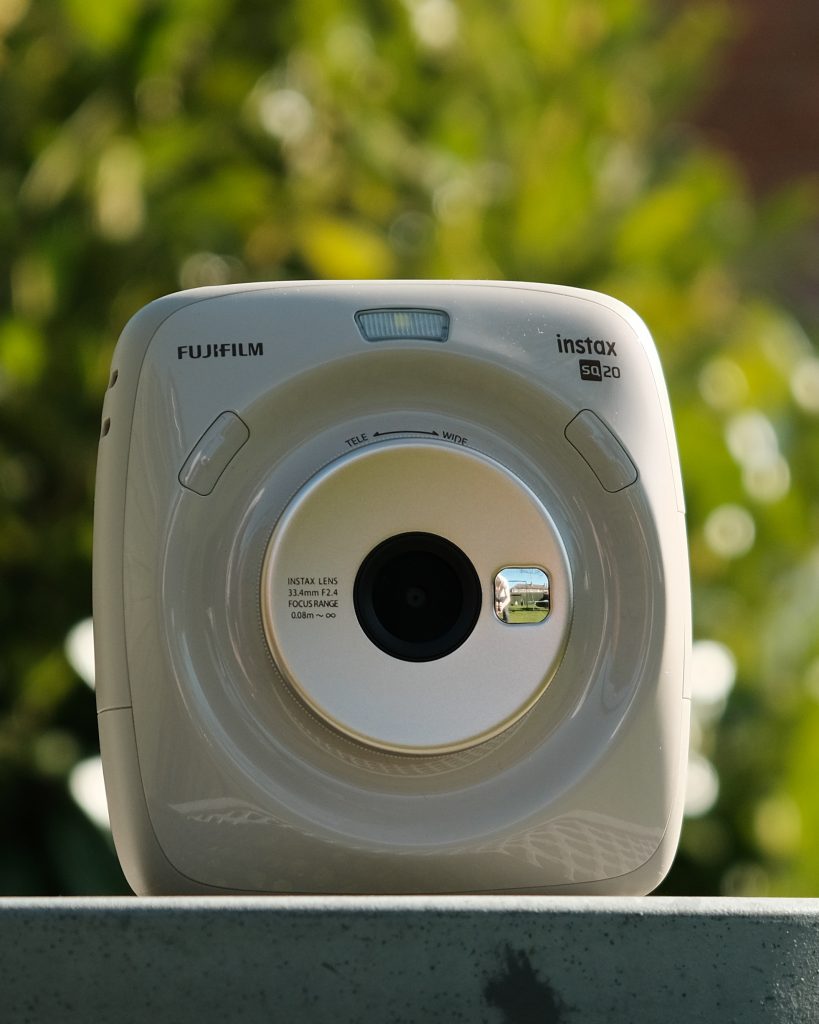
Fujifilm SQ20 Front View 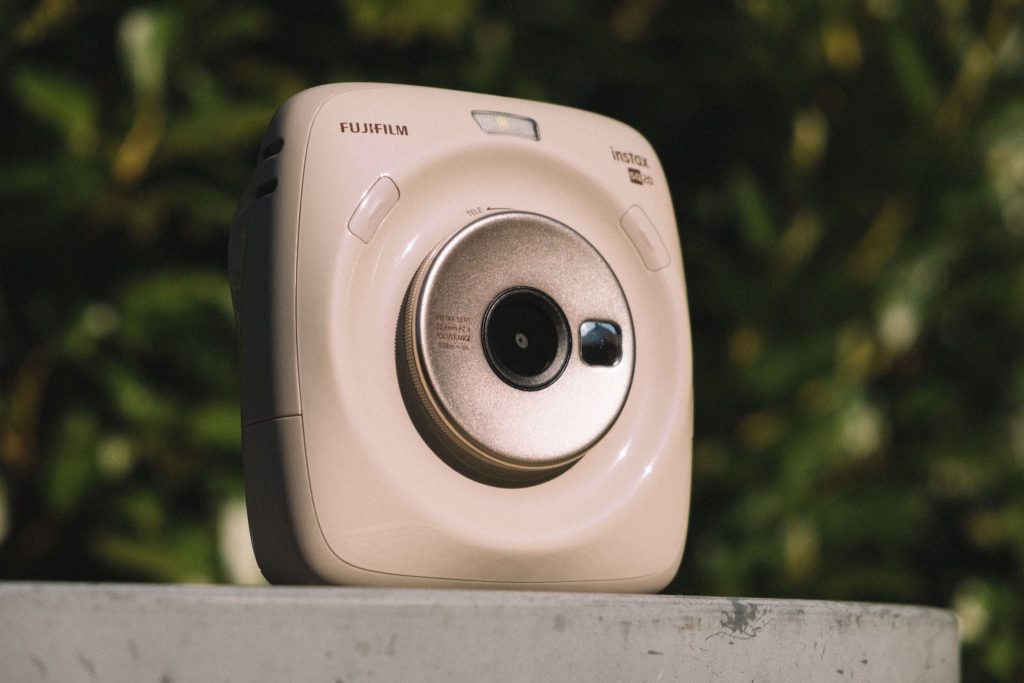
Instax SQ20 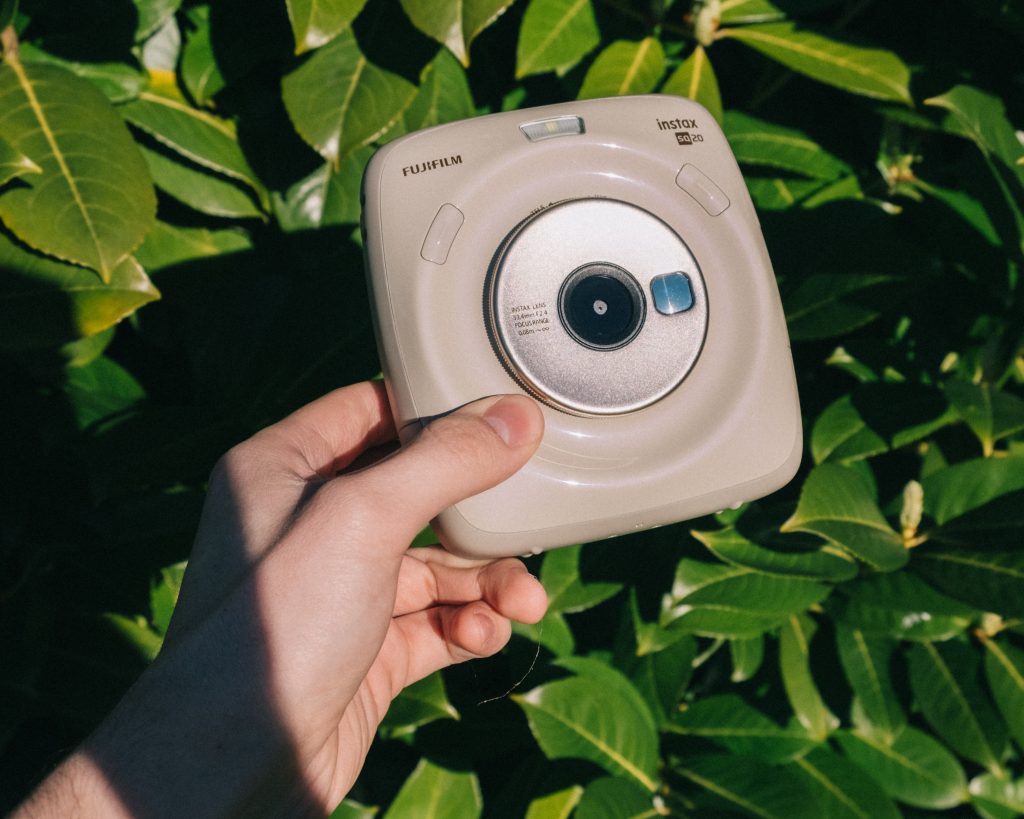
Fujifilm Instax SQ20 in hand 
Rear side of Instax SQ20 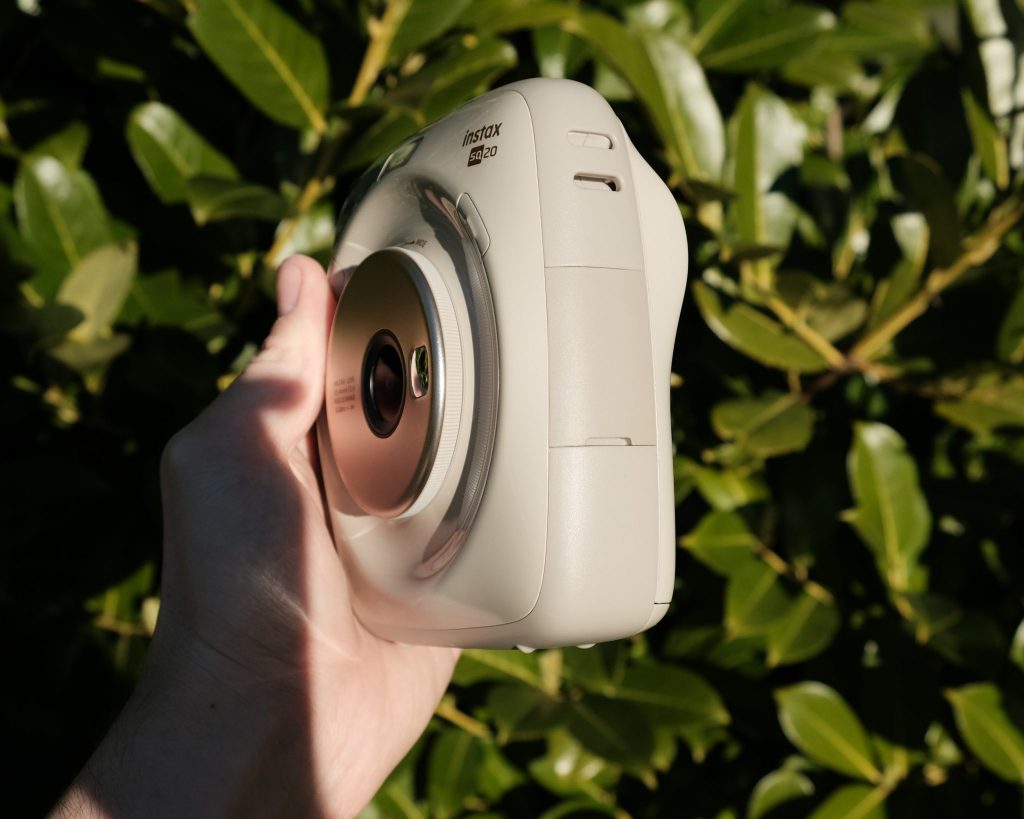
Side view of Instax SQ20
This camera won’t be for everyone but in light of that, it is still a very cool camera. Fujifilm has taken a very interesting approach and has created something that has been uttered in the camera community “imagine if they put a screen on it?” and they have. We can see this camera being very popular in the selfie-loving Asian market. Only time will tell if this camera grows in popularity for the western selfie lovers.
Check out our review of the Fujifilm Instax SQ20 instant camera here, the latest in #TheMeasure series and subscribe to our Youtube Channel if you haven’t already.
You’ll also find a good number of Fujifilm Instax Square products in our STORE, so go take a look around!



